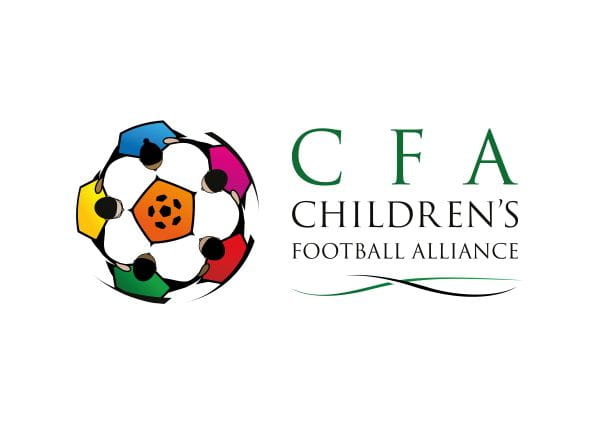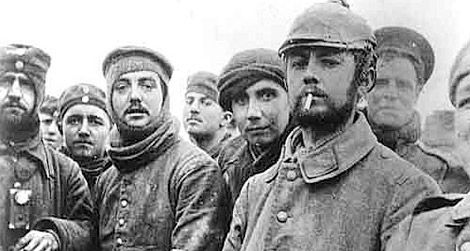Strip away professional football’s: governing bodies, brands, corporations, media and the money, what are you left with?
A game of football!
If we were lucky? We will remember playing a game of football without lines, adults, referees, linesmen / women and the fear of win at all costs. All we had to fear was being on time for dinner when our parents called us in after playtime.
The essence of football can be found in childhood memories: making friends, scoring your first ever goal, great saves and not forgetting, the feel-good factor.
It can be argued that the essence of football was briefly rediscovered in a space time and place, in the First World War. The Space, No Man’s Land, the time 24th December 1914 and the place, Flanders Field, Mesen, Belgium. In an act of insubordination, Allied and German soldiers fraternized during a truce where they exchanged gifts and played games of football. A truce in the First World War was an opportunity to collect the dead from no mans’ land. Amongst the blood, mud and poetry*, this extraordinary act remains timeless when people of all ages, faiths and cultures visit and pay homage, at the site of the 1914 Christmas Truces.
Wyvern School from Kent, England, at the UEFA memorial to the Christmas Truces.
It is the Christmas Truces that connect the United Nation’s International Day of Peace with The National Children’s Football Alliance’s Global Peace Games (GPGs) facilitated at the Peace Village, Messines, Belgium, site of the 1914 Christmas Truces.
Through public funding, young mixed ability and mixed gender people, come together from diverse communities to participate through playing games of football, in a week long peace education programme: refugees, migrants, immigrants, public, private, state, special needs, and referral children, all experience the power of football.
The GPGs creates peace makers for the future. How? The Ambassadors for Peace explore the value of playing football in its many different forms in a location where tens of thousands of men and women died in conflict (First World War 16 million war dead – 9 million battle dead*).
Young people connect with the environment and contextualise their own life experiences with that of the mothers, fathers, sons and daughters, from over 100 years ago.
Many of the children come from war torn countries, poverty stricken areas, communities of high deprivation, gangland neighbourhoods and many of the children come from: more affluent, inner cities and rural communities. The key to the GPGs is social inclusion and not social selection.
Participants speak different languages; however, it is the universal language football that breaks down barriers and builds life long friendships.
The game is the teacher and the historical location is the learning environment. A blend that connects, humanitarianism, creativity, confidence and fun.
Football breaks down barriers. It is not a cliché. The essence of the game is best observed in primary school children when loosely supervised. All children have abilities. There is no child with no ability to participate in a children’s game of football. Children will work out amongst themselves how to contribute in a game of football. If it is not a level playing field in terms of equality – children will find a way to work it out. The GPGs refers to this methodology and trusts the game of football to be the learning tool.
2019 Global Peace Games. 80 participants from 16 countries
Reminiscent of children’s playground football (jumpers for goal posts) loosely supervised games provide an opportunity for young people to reclaim their game. A metaphoric act of subordination if you like? No association rules, no brands, no great expectations and most importantly, no win at all costs. It is important to add, that the games are no-less competitive, however, they are noticeably creative, inventive and explorative, just like the football games were at primary school age.
Many young people have the ability to contextualise their experiences from home with those young men and women of over 100 years ago. Some young people can connect to conflict at home, in school or in their communities with the humanitarian act witness at the 1914 Christmas Truces. They empathise with the soldiers’ fraternization, exchanging gifts and playing games of football. It is the game of football that connects childhood with adulthood. It is the game that metaphorically levels playing field.
In a state of war soldiers reverted back to childhood to momentarily escape the horror of war by playing a game of football. This act chimes with many of the GPGs participants. They recognise / empathize that in extreme times many people will revert back to happier times to help forget fear, which is summed up by a 2019 GPGs participant in the following quote by Pankaj, India:
‘When I feel sad, frightened and emotional, I play football to help me forget’.
Pankaj, India
Let us not forget the essence of football for fun. The GPGs lends itself to the greatest team game on the planet. What better way to celebrate International Day of Peace than play a game of football for fun? The social inclusion factor has been well documented over the years in GPGs case studies
Football connects communities, families, schools, countries and continents; it’s a global game that brings peace in a world that craves it.
International Day of Peace, lends itself to football at the GPGs. The game illustrates that languages may have changed, politics has changed and indeed to a degree, history has changed – however, what is clear is that the game of football remains as important in communities around the world now as it was over 100 years ago; in particular as a force for good in times of global concern.
Further viewing:
Further information about how the National Children’s Football Alliance projects:
https://www.childrensfootballalliance.com/
https://www.childrensfootballalliance.com/football-and-peace/
Index:
Blood, mud and poetry*, page 1: http://heritageetal.blogspot.com/2017/07/john-lee-on-war-poetry-when-mud-and.html
First World War 16 million war dead* page 2: https://www.britannica.com/event/World-War-I/Killed-wounded-and-missing




